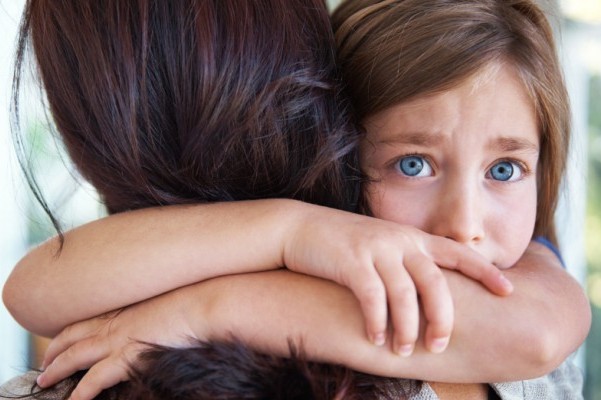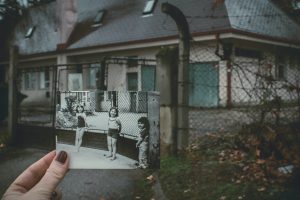Anxious Attachment: Understanding Insecure Anxious Attachment
Understanding Anxious Attachment
Human beings are born with strong survival instincts. One of the strongest is based on an infant’s inability to survive on its own and its complete dependence on an adult for nurturance and protection. Babies have an innate drive to make sure that they get their basic needs met by a parent, caregiver or other significant person in their life. Different children develop different strategies for accomplishing this depending on the emotional environment and the kind of care available to them. Attachment theory is the study of this primitive instinct and researchers have organized the various strategies into four categories of attachment patterns: secure attachment and two types of insecure attachment, avoidant attachment and anxious attachment. The fourth attachment category, known as disorganized attachment, occurs when no organized strategy is formed.
Attachment researchers have identified attunement as being significant in the formation of an attachment. Attunement means being in harmony; being aware of and responsive to another. Emotional attunement involves being in harmony first with oneself, then with another and finally with circumstances. Attunement and attachment are related in that an adult, who is available, attuned and responsive to a child’s needs, beginning in infancy, establishes a secure attachment for that child. This attunement creates a strong foundation from which that child can explore the world.
A lack of attunement or misattunement from a parent or primary caregiver results in an insecure attachment developing in the relationship with their child. In another article, I discuss how an avoidant attachment pattern develops when parents are cold, emotionally unavailable and distant, and children then try to shut down their awareness of their primary needs. This article will explain how an ambivalent/anxious attachment develops in childhood and goes on to effect individuals in their adult relationships.
What is Ambivalent/Anxious Attachment?
Many parents and/or caregivers are inconsistently attuned to their children. Attachment researchers describe the behavior of these adults, noting how at times they are nurturing, attuned and respond effectively to their child’s distress, while at other times they are intrusive, insensitive or emotionally unavailable. When parents vacillate between these two very different responses, their children become confused and insecure, not knowing what kind of treatment to expect. These children often feel distrustful or suspicious of their parent, but they act clingy and desperate. They learn that the best way to get their needs met is to cling to their attachment figure. These children have an ambivalent/anxious attachment with their unpredictable parent.
What behaviors are associated with an anxious attachment pattern?
Children with an ambivalent/anxious attachment pattern tend to cling to their attachment figures and often act desperate for their attention. Mary Ainsworth, who assessed children’s attachment patterns at 12 to 18 months, noted that when the children with anxious attachment were reunited with their mothers, they were confused, dazed or agitated; staring off into space and avoiding direct eye contact with her. Yet, these children usually clung to the mother. They remained intensely focused on their mother, but did not seem to be satisfied or comforted. The narrow focus and limited responses of these children prevented any further play or exploratory behavior.
How does an anxious attachment pattern develop in children?
A number of factors may contribute to the formation of an anxious attachment pattern between a parent and child. The main factor in a child developing an ambivalent/anxious attachment pattern is inconsistent attunement in the relationship with their primary caregiver.
Studies have shown that the quality of the relationship between the parents plays a central role in the transmission of specific attachment patterns from one generation to the next. Therefore, a child imitates the ambivalent/anxious attachment strategies of their parent. In addition, research has also found that parents’ child-rearing practices tend to reflect the specific attachment pattern they developed as children with their parents. Thus, parents who grew up with an anxious attachment are inconsistent in how they relate to their children, which their children react to by forming their own anxious attachment patterns.
Many of these parents and caregivers, due to the unreliable and inconsistent parenting they received, experience powerful feelings of emotional hunger toward their child. They act in ways that are insensitive and intrusive when they confuse emotional hunger with genuine love for their child. In Compassionate Child-Rearing, Robert Firestone describes how parents mistake their feelings of longing and the desire to get love from their child for actual love and concern for the child’s wellbeing. These parents can be over-protective, or try to live vicariously through their child, or be focused on their child’s appearance and performance. They often overstep the personal boundaries of their children by touching them excessively and by invading their privacy.

In this Webinar: This online workshop with Dr. Lisa Firestone will provide tools to help people heal insecure attachment, resolve trauma, integrate their…
How does an anxious attachment manifest in adulthood?
Children who have an anxious attachment often grow up to have preoccupied attachment patterns. As adults, they tend to be self-critical and insecure. They seek approval and reassurance from others, yet this never relieves their self-doubt. In their relationships, deep-seated feelings that they are going to be rejected make them worried and not trusting. This drives them to act clingy and feel overly dependent on their partner. These people’s lives are not balanced: their insecurity leaves them turned against themselves and emotionally desperate in their relationships.
Adults with preoccupied attachment patterns are often feel desperate and assume the role of the “pursuer” in a relationship. They often have positive views of other people, especially their parents and their partner, and generally have a negative view of themselves. They rely heavily on their partner to validate their self-worth. Because they grew up insecure based on the inconsistent availability of their caregivers, they are “rejection-sensitive.” They anticipate rejection or abandonment and look for signs that their partner is losing interest.
These people are often driven to engage in pre-emptive strategies in an attempt to avoid being rejected. However, their excessive dependency, demands and possessiveness tend to backfire and precipitate the very abandonment that they fear. Attachment theorists and researchers Shaver and Clark, (1994), have observed that “preoccupied” partners appear to be “perpetually vigilant and somewhat histrionic.” They feel resentful and angry when their partner doesn’t provide the attention and reassurance they feel they need. They often believe that unless they dramatically express their anxiety and anger, it is unlikely that the other person will respond to them. Many of those with preoccupied attachments are reluctant to express their angry feelings toward a partner for fear of potential loss or rejection. When they try to suppress their anger, their behavior tends to vacillate between outbursts of anger and pleas for forgiveness and support. In some cases, the fears and anxieties can lead to more serious emotional disturbances, such as depression.
How are patterns of attachment supported by the critical inner voice?
The pessimistic beliefs and expectations associated with adult attachment patterns are reinforced by destructive thoughts or critical inner voices about oneself, others, and the world in general. These critical voices strongly influence a person’s style of relating in an intimate relationship. People with a preoccupied adult attachment have “voices” that support their beliefs that the world is an emotionally unreliable place filled with uncertainty and the potential loss of those they love. Examples of their voice attacks are, “It’s obvious that he/she is losing interest in you.” “Why isn’t he/she more affectionate?” “He/she always has an excuse for not wanting to make love.” “You’re so needy and dependent. No wonder she(he) doesn’t like you.” “He/she doesn’t love you as much as you love him/her.”
How can a person transform an anxious attachment into a secure one?
Fortunately, a person’s style of attachment can be revised through new experiences, through interacting with a partner who has a history of being securely attached and through psychotherapy. Another effective way to develop secure attachment in adulthood is by making sense of one’s story. According to Dr. Dan Siegel, attachment research demonstrates that “the best predictor of a child’s security of attachment is not what happened to his parents as children, but rather how his parents made sense of those childhood experiences.” The key to “making sense” of one’s life experiences is to write a coherent narrative, which helps them understand how their childhood experiences are still affecting them in their life today. In PsychAlive’s online course with Drs. Dan Siegel and Lisa Firestone, they will walk individuals through the process of creating a coherent narrative to help them to build healthier, more secure attachments and strengthen their own personal sense of emotional resilience.When one creates a coherent narrative, they actually rewire their brain to cultivate more security within themselves and their relationships.
In couples’ therapy, both partners can go through the process of Voice Therapy, which will help them identify and challenge the critical inner voices that promote expectations of rejection and that fuel their feelings of anger. In their sessions, partners can “give away,” that is, expose their self-criticisms as well as their hostile, cynical attitudes toward the other person. Generally speaking, in an effective couples’ therapy, both partners expose and challenge their critical inner voices and come to understand the source of their destructive thoughts and attitudes in the context of their earliest attachments. This approach provides the impetus for exploring new, more positive ways of relating, and frees people to experience genuine loving feelings and real security in their intimate relationships.
To learn more about how to write a coherent narrative and develop an earned secure attachment, join Dr. Lisa Firestone and Dr. Daniel Siegel for the online course “Making Sense of Your Life: Understanding Your Past to Liberate Your Present and Empower Your Future.”
Read Part 2 of this article Understanding Anxious/Avoidant Attachment
Read about how to Change Your Attachment Style to Have a Better Life
Read about How Your Attachment Style Impacts Your Relationship
Tags: adult attachment, anxious, attachment, attachment patterns, attachment style, attachment styles, child attachment











I’m really confused about the part of this entry discussing what adults with this attachment style can do to become secure because a person would have to be married to attend couples counseling, and the odds of being married to a secure adult are at best 1 in 4 (based on the four styles, and this guess is highly inaccurate). I don’t think this suggestion appreciates how difficult it is to be and remain attractive to adults within one’s age group when they have this attachment challenge. It is enormously difficult to do without faking, and faking security is a great way to put a death wish on the relationship. I’m certain none of this is news; isn’t there some other way to suggest recovering from this style of attaching for those of us who are single and would like to work toward developing a new style in order to date from a more secure place? Psychotherapy is an easy answer to suggest, but whats frustrating about that is how meaningless it is. If you have a heart problem, it’s recommended you see a cardiologist and that doctor will put you on a science based protocol. In therapy, there are no promises.
Please see the next article to be posted soon on Avoidant/Anxious Attachment. I hope to provide some suggestions that might be useful for people who are not currently in therapy or counseling and who may not be in a relationship with a person who has a secure attachment style. Thanks for asking this question. Joyce
I believe this to be extremely important. In fact, it’s crucial to learn more about it. I am going to bring this to my next therapy session.
Hi!
I teach sped preschool and have concerns about one of my students possibly having an attachment disorder of some kind. Is there a resource I can use that would give more specific behaviors to watch for- perhaps in a structured setting like a classroom?
Hi Brittney, Try reading Parenting from the Inside Out by Daniel Siegel and Mary Hartzell. Mary is a preschool teacher. also Louis Cozolono’s Attachment based teaching; Creating the Tribal Classroom W.W. Norton. Thanks for writing. Joyce
I have read a few articles on this site about style of attachment and the Anxiety Attachment unequivocally describes me. This is THE best explanation and description of why I am the way I am that I’ve come across. I am involved with someone at the moment who has lied to me in the past. We have only been together for a matter of months. I have become progressively needy and clingy convinced he is losing interest and pursuing someone else. I did recognize I was headed for disaster so have toned it down dramatically. He swings between being incredibly supportive emotionally to unavailable emotionally. I am trying to concentrate more on myself – running after him less. I am hoping he feels closer to me for me giving him some reasonable space but if it phases out, at least till then I am busy working on me so I wont fall apart if it ends. I really have some major work to do on myself. It is overwhelming.
Lisa,
I am in your exact same boat.. I have only just realized I have this problem and battling to give my partner the fresh air he needs. But Everyday I am trying harder than before.
Stay positive
Hi, my grandson has Ambivalent attachment disorder and Is now living with me as his mother has mental health issues and they really clash.. he seems a lot happier with me but I know nothing about his disorder and I’ve asked his camhs worker for info on it but as of yet she hasn’t bothered.are there any books, website where I can learn more and how to help him…
Thank you
Thank you for your question. We highly recommend you (and your daughter, if she is open to the idea) sign up for our parenting eCourse. We dedicate an entire week of the course to developing secure attachment. You can learn more about the course here. Dr. Dan Siegel’s book Parenting from the Inside Out is also a helpful resource.
Hi there, please consider the possibility you are attached to an Avoidant person. This is the worst thing for an Anxious person as Avoidant people actually send you mixed messages, they draw you in and then push you away – which triggers your Anxious attachment system. They actually play a part in your instability. Imagine standing on a bridge that is constantly shivvering – you can’t feel stable! And that’s how attaching to an Avoidant (inconsistent) person is. It’s not just you! I really recommend the book Attached (http://www.attachedthebook.com) – you will learn so much not only about your style, but also the style of your partner, and also how to effectively communicate your needs. I’m learning so much and just wanted to pass this on before you go blaming yourself entirely 🙂
Joyce, was that next article every published and if so would you please share the link?
Here is Part 2 of the article.
In this article it says the avoidant attachment is disorhanised. I thought that type A and C were organised attachement styles in that they are adaptive to getting attachment But still insecure. And that type D is disorganised . Have I miss understood? Can you have avoidant organised and avoidant dosorganised? I’m trying to write an Eassey an getting a by confused.
Any help would be appreciated.
Naomi
I am confused by the last part of the first section of the article. You write “the disorganized attachment pattern, known as ambivalent/anxious attachment”. Few lines earlier you mention these two as different types of attachment. (I believe Naomi s comment points to the same problem.) Is it a mistake?
Peter
Hey
Im citing this for my dissertation and was wondering when this was written?
thanks 😉
This was published Dec. 19, 2014.
Nice article, helpful, thank you. And… I’m secure and my partner is anxious-preoccupied. We have been together 2 years and now live together. I’m looking for advice on how to deal with the frequent confusing need requests — e.g. requests for my children to behave perfectly 100% of the time (not realistic), for me to communicate what he doesn’t know when he is missing something (impossible, tho believe me I overcommunicate now based on past requests like this), etc.
But humans are imperfect; something will be undone or overlooked eventually. Usually, it’s fine. And sometimes he gets angry about it and makes a demand. Inconsistently tho. It’s confusing to say the least.
My issue is I don’t understand how to respond. He doesnt seem to be satisfiable. He claims to only want to be heard. That means, I have discovered, to listen to him, to not share my side of the experience, to not brainstorm compromises when we disagree, and then to do exactly what he said needs doing. If I disagree with his interpretation or give him information he was clearly missing in his perspective, he says I’m not hearing him and I’m being defensive. I’ve definitely had my moments of defensiveness and admitted it later and approached him to resolve the issue. But he won’t back down, only digs himself in deeper. Doesn’t make sense.
When I do listen and agree with him, I have to repeat myself so many times, like he can’t hear that I agree with him and want to make that change too. He’s almost disoriented when he hears me. Is it possible to resolve these demands?
What does he really need? I’m not going to parent my (not his) kids his way or do something I don’t agree with. (Hm, I compromise my ideals to make peace a lot, actually, thinking about it. On the little things.) I’m not going to agree with his irrational uninformed almost paranoid viewpoint in the times he is like that. And when I don’t, he says he just can’t talk to me, can’t trust me to listen to him, and says he won’t tell me what he needs in future, all of which spell the death knell of a relationship to me.
Help! How do I help him feel secure in our relationship? How should I react to these seemingly random demands? He definitely has more of them when he is stressed at work. I always acknowledge his upset, I tell him over and over that i love him and how he feels is important to me and that I would never on purpose hurt him. I apologize when I’ve overlooked something. I ask if I can do anything to help him feel better. He always says no and contI use to make his demand.
I’m asea. Thanks for listening.
Hi. I have just read part 2 as suggested and it does not answer Lisa’s questions. In fact it doesn’t really address anxious attachment or solutions to this problem at all. It only talks about avoidant attachment.
As an adult with anxious attachment I too would love to find some solutions and avoid further heartache. I do not think that signposting to psychotherapy, or trying a relationship is a satisfactory answer.
Can you possibly provide a more in depth solutions based piece? It’s great identifying a problem, but these articles really don’t provide much help. Thanks
THANK YOU!!
How do I set boundaries as and anxious attachment person. When trying to meet people and date I find I let people do whatever to me as far as treatment but as time progresses of course I don’t like being taken for granted or feeling like I am being dismissed or not cared about and then I lash out and become angry and end it abruptly and not in a very kind way. Im trying to see it from their perspective… They might be thinking “It was fine the past few days, weeks” etc.. why am I mad about it now? Are boundaries needed? I love the attachment theory and how we DO need people and we are dependent on people in life and relationships but is there a health amount of dependency and more importantly is there an unhealthy amount of dependency? Thanks so much!!
Hiw can a person protect themselves from an ambivalent individual? Precautions to take? Are these individuals suicidal, violent?
The anxious attachment sounds right for me. I dont know how or why I came to be this way. I’m also an HSP hypersensitive. Us there a correlation? Relationships are difficult and I second guess everything instead of being happy.
This is the story of my life… You nailed it. Right now I am feeling hopeless and helpless in ever having a healthy relationship.
As somebody with an anxious attachment style, I found therapy enormously helpful. In fact, counselling or psychotherapy gives you, in summary, an opportunity to attach to a therapist who will help you to a) explore and expand your awareness and b) gradually form a secure attachment, In a way, it is a process of breaking down old patterns and behaviours and replacing them with more authentic You! So in fact, personal therapy 1:1 is the best place to start and invest in oneself.
Anxious attachment is very difficult to address because it forms so early in one’s life. Cognitive therapy could be very helpful because it challenges one’s thoughts so that eventually another internal response in the anxious individual can be incorporated into one’s psyche. Psychodynamic psychotherapy can also be helpful because, as stated above, it gives one the opportunity to work on an actual attachment with the therapist to adjust one’s early learned belief system. Understanding one’s extremely early upbringing is helpful also because eventually one can learn that some partners can actually be patient enough to allow connection and reassurance that they will not leave the relationship regardless of your attachment style. It’s something that can be changed within you. I have an anxious attachment style that impacts all my relationships even with non-human objects such as stuffed animals and furniture, I worry that they will get lost or get damaged. But just recognizing that this does not make sense in reality helps.
Your partner seems to be over-controlling and to have no regard whatsoever for your rights or needs. Are you sure he’s not a malignant narcissist?
Thanks for this article. Was very insightful.
Oh my goodness, I left someone likenthis after 25 years. I finally saw the light. I’ve never looked back. I needed a lot of support in therapy but I feel like a small bud starting to bloom after 5 months away. Yes I have children. Yes it’s hard. Yes it’s worth it.
Read up on narcissism and seek therapy for support and validation. Go well .
Hi I came across the anxious attachment model after speaking with my counsellor. I want to know if anyone has written anything or has any tips on how to retrain the brain into a different way of thinking?
I’m tired of making the same mistakes in adult relationships
Thanks
Darren
Hi
I am with someone who has this. He did initially fake it. It’s the only way, so go ahead. If the love is strong enough you can face it together. But, you must face it head on. It’s not your fault and with help you can overcome it
Emotionally Focused Therapy, not voice therapy, is the highly researched, gold standard for breaking cycles of insecure attachment 👍🏻
Yet another article that assumes or requires that the individual with an insecure attachment style be in a relationship or can afford long-term psychotherapy!!! But what if you’re not in a relationship? What is you don’t have the financial resources for psychotherapy? Does that mean this large group of people are screwed? Would be helpful if there was information about how to form secure attachments if you’re single! Unfortunately, this article is no more useful to single, financially-challenged individuals than all the other articles that say the same thing! Sorry.
To everyone above seeking help on healing attachment style injury…check out the Personal Development School. You can also look up Thais Gibson (the founder) on youtube and see tons of videos she has made. She is the best I have heard on explaining each style and the school goes into depth of how to re-wire your brain.